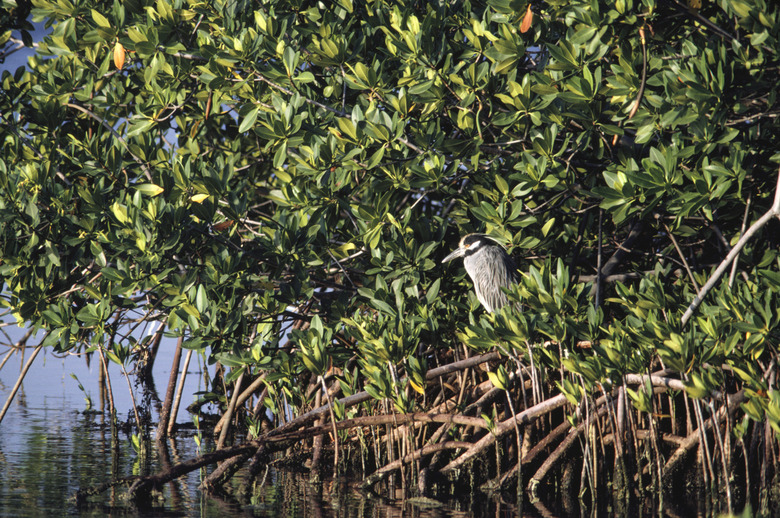How To Care For A Potted Mangrove
Mangroves (Rhizophora mangle), the ecological superstars of tropical coasts where they filter polluted runoff, block tsunami waves and reduce greenhouse gases, can be grown in your own home or garden. These unique trees are hardy in U.S. Department of Agriculture plant hardiness zones 10 to 11, growing wild along the beaches of southern Florida and other tropical locations throughout the world. They grow to 30 feet or more in their natural environments, but mangroves can be grown as potted plants in any region and brought indoors for the winter. Potted mangroves make attractive and exceptionally easy to care for houseplants. They also can spark ecological interest in children who might enjoy learning about your potted mangroves' superstar relatives.
Potting Up a Mangrove
Step 1
Step 1
Select a suitable vessel for your potted mangrove — the only requirement is that it can hold water. Otherwise, it is a matter of personal style and aesthetics. Mangroves can grow rapidly in ideal conditions and can be potted up to a bigger container periodically, if a larger plant is desired.
- Mangroves (Rhizophora mangle), the ecological superstars of tropical coasts where they filter polluted runoff, block tsunami waves and reduce greenhouse gases, can be grown in your own home or garden.
- They grow to 30 feet or more in their natural environments, but mangroves can be grown as potted plants in any region and brought indoors for the winter.
Step 2
Step 2
Fill 10 percent of the container with gravel or decorative pebbles of any kind. Extract the mangrove from its current pot and place it in the new container with the roots resting on the gravel.
Step 3
Step 3
Fill the remainder of the container with the pebbles or gravel around the roots and trunk of the tree. It is fine to cover the trunk with gravel, as long as all the leaves are above the surface.
Step 4
Step 4
Fill the new container with water to just below the top of the gravel or pebbles.
Maintenance
Step 1
Step 1
Add water to the container on a weekly basis, if needed. The bottom roots of mangroves need to be covered in water at all times, but it is OK to fill the container to the top — the little trees will suck up any amount of water and release it into the atmosphere through their leaves.
- Fill 10 percent of the container with gravel or decorative pebbles of any kind.
- Fill the new container with water to just below the top of the gravel or pebbles.
Step 2
Step 2
Mix a 1/2 teaspoon of houseplant fertilizer and a half teaspoon of epsom salt with a gallon of water. Pour into the pot containing the mangrove once per month. If the container is full of water, pour out enough to add the fertilizer solution.
Step 3
Step 3
Spray the leaves with water several times each month, especially if the plants are outdoors in a dry climate. Mangroves grow best in humid conditions, which is why they often do better as houseplants than potted outdoor plants
Step 4
Step 4
Adjust the location of your mangrove if it seems to be getting too much or too little light. Leaves will appear scalded and droopy if they are receiving too much sun. Splotchy, pale green leaves are a sign of too little light, and will eventually turn yellow and fall off. Potted mangroves do best in bright, indirect light or filtered shade — never place them in a location with full sun.
- Mix a 1/2 teaspoon of houseplant fertilizer and a half teaspoon of epsom salt with a gallon of water.
- Mangroves grow best in humid conditions, which is why they often do better as houseplants than potted outdoor plants Adjust the location of your mangrove if it seems to be getting too much or too little light.
Step 5
Step 5
Trim and prune to control the size of the plant. Mangroves are amenable to pruning, but never remove all the foliage. Always remove dead or diseased wood and yellow leaves.
Tip
Experiment with arranging more than one mangrove in a container, creating a miniature forest, complete with shells, moss, driftwood or other items to add to the effect.
Things Needed
- Epsom salt
- Houseplant fertilizer
- Hand pruners
- Pots
- Gravel or pebbles
